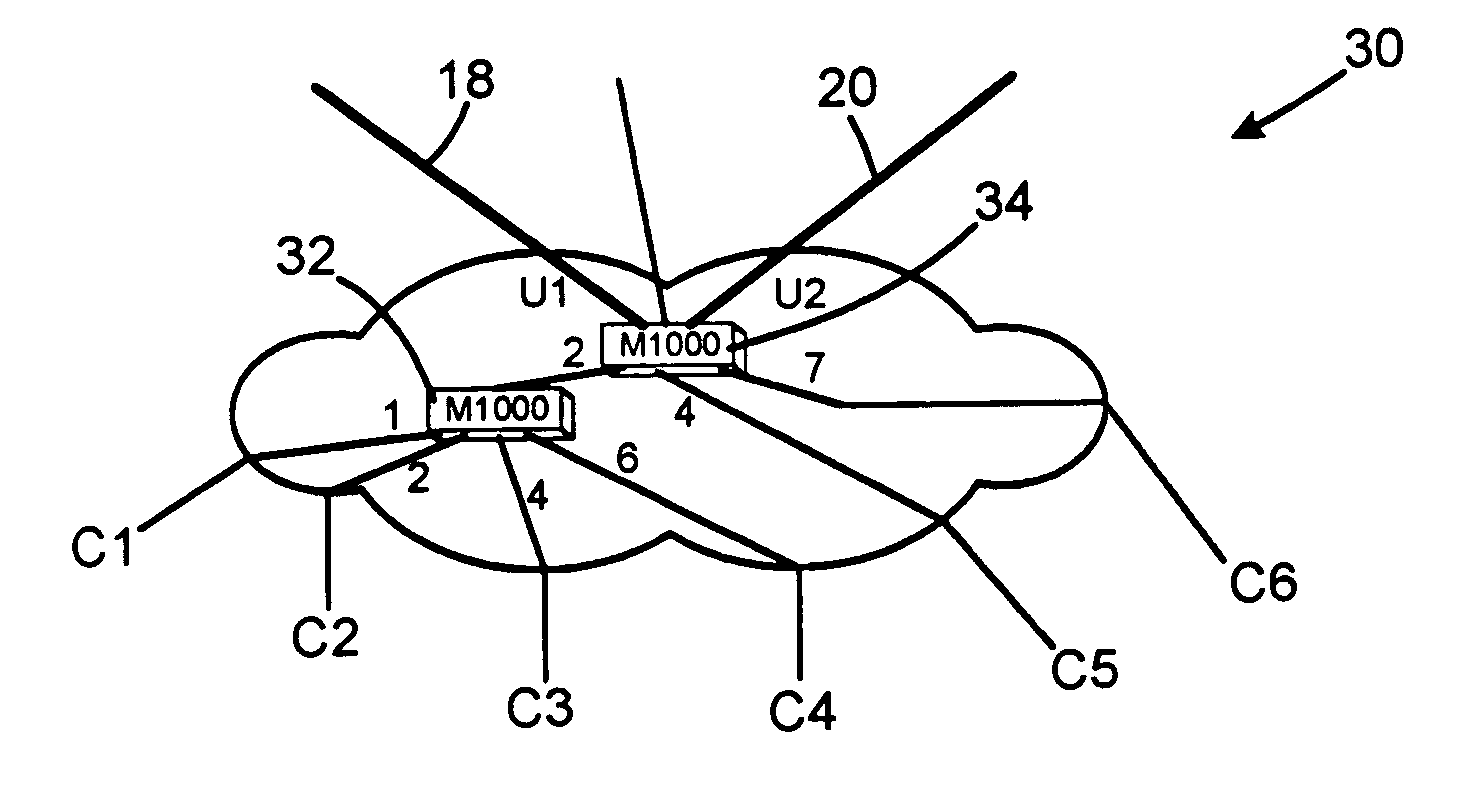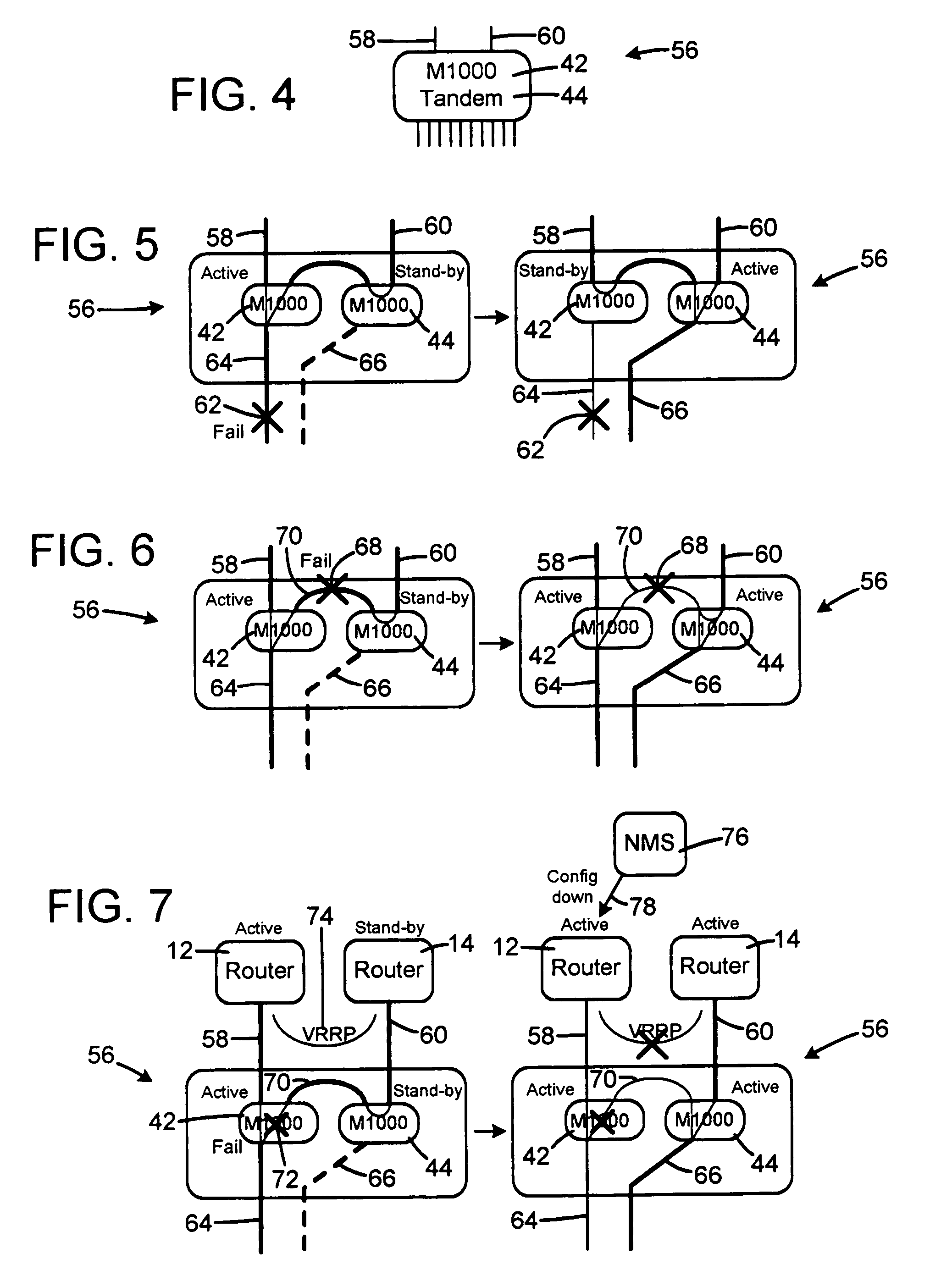Restoration mechanism for network topologies
a network topology and restoration mechanism technology, applied in error detection/correction, redundancy hardware error correction, instruments, etc., can solve the problems of large structure size, unsuitable for very large structures, and current use of ethernet switches
- Summary
- Abstract
- Description
- Claims
- Application Information
AI Technical Summary
Benefits of technology
Problems solved by technology
Method used
Image
Examples
Embodiment Construction
[0020] As shown in FIG. 2, the physical topology 30 may be different than the logical hub and spoke. First, a tree structure may be used to aggregate the customer traffic in several steps towards the hub node. A daisy-chain of Marvin multiplex units 32, 34 can be used to simplify the build out when a tree is unsuitable or to reduce the amount of fiber or copper links as well as the number of router or switch interfaces. The units 32, 34 can be used to connect and merge a plurality of customer lines while keeping each customer line separate with mTags so the traffic to and from the different customers are not mixed up. For example, each unit may have ten customer ports and two network links. The units 32, 34 may have the characteristics of receiving and sending Ethernet frames and the units only switch information between the access ports and the network ports and vice versa but not between different access ports and between different network ports. The tags are used to distinguish t...
PUM
 Login to View More
Login to View More Abstract
Description
Claims
Application Information
 Login to View More
Login to View More - R&D
- Intellectual Property
- Life Sciences
- Materials
- Tech Scout
- Unparalleled Data Quality
- Higher Quality Content
- 60% Fewer Hallucinations
Browse by: Latest US Patents, China's latest patents, Technical Efficacy Thesaurus, Application Domain, Technology Topic, Popular Technical Reports.
© 2025 PatSnap. All rights reserved.Legal|Privacy policy|Modern Slavery Act Transparency Statement|Sitemap|About US| Contact US: help@patsnap.com



